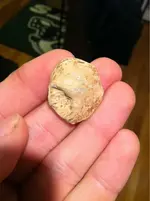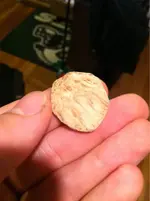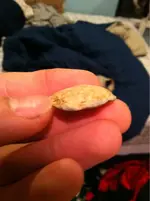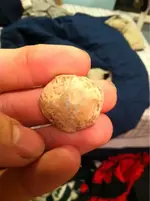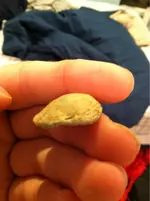A year ago I posted on the same subject, and here are some pictures and quotes from that post.
When casting lead balls a person will pour a bunch before cutting the sprue off. This is because the fresh cast ball is plenty hot, and the mold also gets plenty hot, so you make up a bunch of balls, let them and the mold cool down and then cut the sprue.
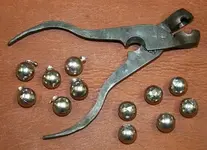
In the photo, the ball mold would be a type used from the 1700's until today. I probably have more than one myself, among the various sizes of bullet molds I use. In the photo the balls between the handles still have the sprue on them, and the ones to the right have been cut using the cutter located on the mold.
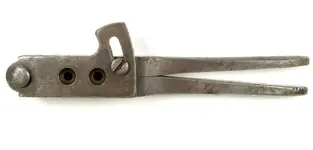
This is a different style bullet mold, this one dates to the civil war, but this type mold for round balls in all sizes is still made today. This one happens to be a colt pistol mold and casts a conical bullet and a round ball in the same mold. What we are interested in is the sprue cutter. On this one the lead is poured in through the holes, when the melted lead sets up, which doesn't take long, then the plate on the top is tapped sideways, cutting the sprue off and leaving a flat place on the ball, where the previous mold in the other post leaves a pinched cut. So your find was cast in a mold with an attached spru cutter, which could date it later. Unless your find is in context with other finds from a certain era, it would be impossible to date, because lots of people still shoot round ball muzzleloaders.
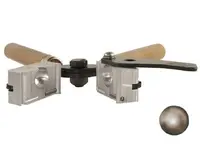
This is a modern Lee round ball mold sold today.
